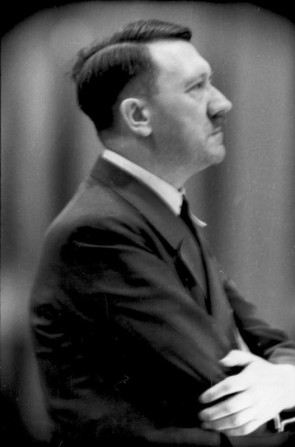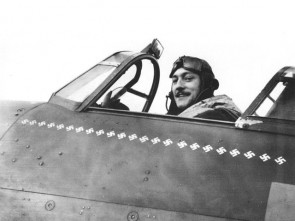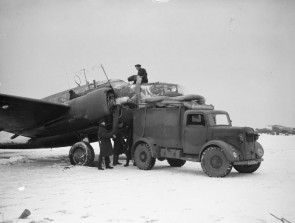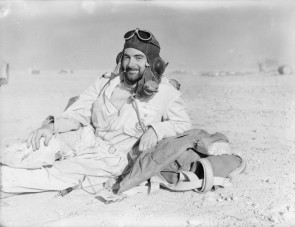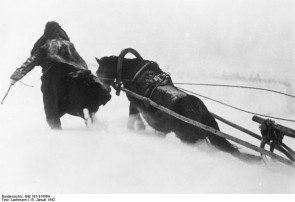You are currently browsing the monthly archive for January 2012.
Malaya. Thousands of British, Australians and Indians cross the causeway in orderly fashion from Malaya to the island of Singapore, accompanied by the bagpipes of the 2nd Battalion, Argyll and Sutherland Highlanders. At 7 AM, the Argyll and Sutherlands are themselves piped across and their commander, Colonel Ian Stewart, is the last to leave Malaya. At 8.15 AM, Indian sappers blow naval depth charges on the causeway, blasting a 70-foot gap. Japanese troops, who have advanced 420 miles in 55 days using bicycles and captured boats, occupy Johore Bharu and begin aerial and artillery bombardment of Singapore. Allied casualties are 5000 killed, 5000 wounded and 20,000 taken prisoner. Churchill is not pleased but worse is to come.
Libya. Rommel’s improvised advance and audacious tactics have sent British 1st Armored Division out of the central desert withdrawing toward Gazala and driven Indian 4th Infantry Division from Benghazi. Panzer Army Afrika pauses to resupply at Benghazi and Mechili.
Battle of Bataan. Japanese 20th Battalion (16th Division) penetrate several places on the West side of the Orion-Bagac line, where Philippine Army’s 1st Regular Division is still digging trenches and stringing wire. Japanese breakthrough is sealed off by 45th Philippine Scout Division, held in reserve in this sector, forming in 2 pockets (“Big Pocket” and “Little Pocket”. In the South of Bataan, well behind the front line, Philippine Scout troops begin reducing Japanese beachheads at Longoskawayan Point and Quinauan Point.
Malaya. During the withdrawal South to Singapore, Japanese move through rubber plantations to outflank and destroy Indian 22nd Brigade at Layang Layang. 9th Division commander General Barstow and 2 Australian staff officers go forward to find 22nd Brigade but run into a Japanese ambush. Barstow is killed. Japanese attempt a similar outflanking of Australian 27th Infantry Brigade 10 miles West on the main road, but are held in hand-to-hand fighting in the rubber plantations of the Namazie Estate. US Far East Air Force B-17 bombers from Dutch airfields on Java attack Kuala Lumpur (as well as Kendari on Celebes Island, Dutch East Indies). Overnight, British gunboats HMS Dragonfly and HMS Scorpion return to Rengit and evacuate more trapped British troops.
Operation Drumbeat. Just after midnight off Newfoundland, U-754 sinks Greek SS Icarion (9 dead and 20 survivors). At 9.43 AM 35 miles Southeast of Ocean City, New Jersey, U-130 sinks American tanker SS Francis E. Powell (4 dead, 28 survivors) and damages American tanker SS Halo with shellfire.
Siege of Leningrad Day 141. Trucks bring in 2000 tons per day on Road of Life across frozen Lake Lagoda and the bread ration has doubled, but civilians are still dying at the rate of 4000 per day. Scurvy is a problem so pine needles are extracted to produce vitamin C. Road of Life capacity now allows civilians to be evacuated from Leningrad (440,000 will be transported out before the Ice Road melts on April 15).
Dutch Borneo. Japanese Assault Unit, which landed East of Balikpapan, captures the airfield by dawn. They make slow progress towards Balikpapan city due to destruction of bridges by the Dutch defenders. 1000 Dutch troops retreat North only to be overwhelmed by Japanese Surprise Attack Unit attacking from their river landings. In the evening, both Japanese units arrive in the city which is now undefended. Japanese are incensed at the prior destruction of the oil facilities by the Dutch, leading to a massacre next month.
Japanese invasion of the oil-rich islands of Dutch East Indies begins in earnest. On the island of Celebes, Japanese Sasebo Combined Special Naval Landing Force lands at Kendari and quickly overwhelms 400 Dutch defenders to capture the airfield. Off Kendari, US submarine USS Swordfish sinks Japanese gunboat Myoken Maru. Off Borneo, Dutch bombers attack Japanese troop ships all day as they approach the oil town of Balikpapan. Dutch submarine K-18 damages Japanese patrol boat P37 (K-18 is counterattacked and damaged by depth charges, returning to the Dutch naval base at Soerabaja, Java, unable to dive). Overnight, 5500 Japanese troops land unopposed at 2 sites North and East of Balikpapan and converge on the city. US destroyers USS Paul Jones, USS Parrot, USS Pope and USS John D. Ford attack the anchored Japanese flotilla with torpedoes overnight, sinking 3 transport ships (Kuretake Maru, Sumanoura Maru and Tatsukami Maru) and the damaged patrol boat P37.


